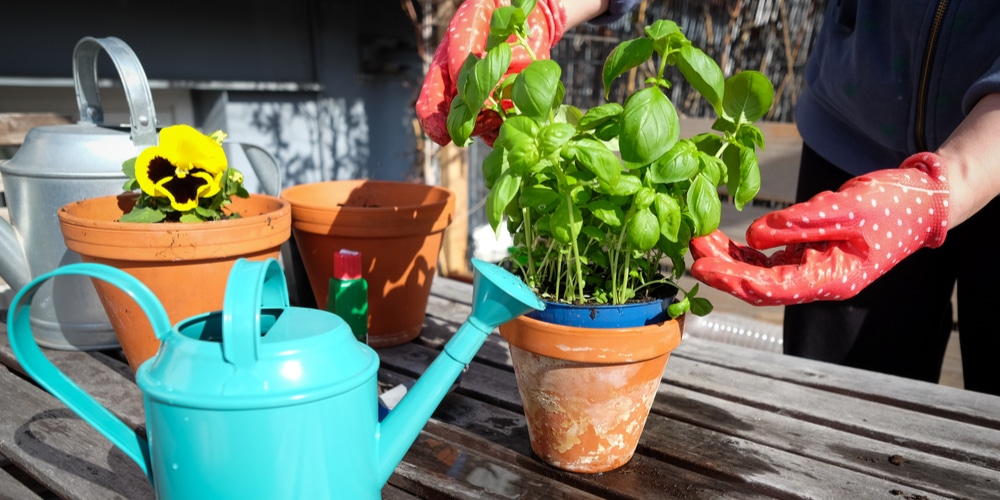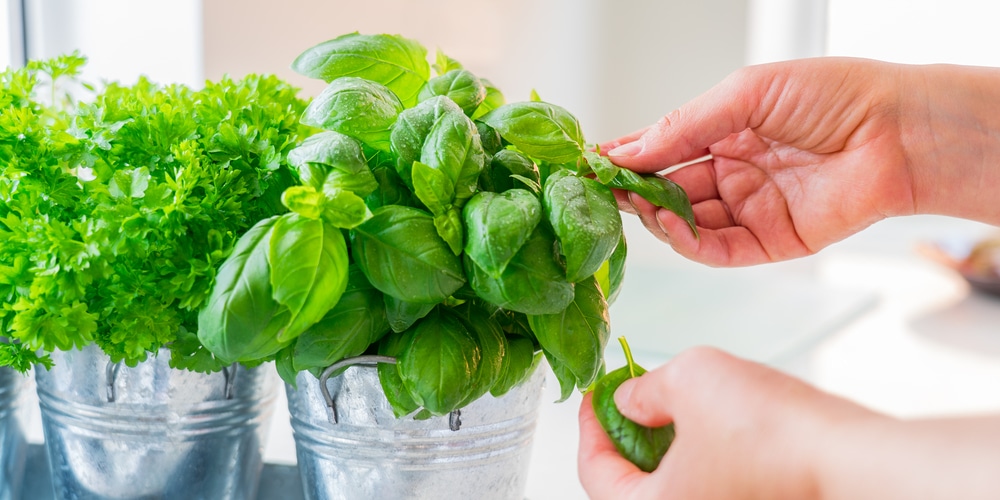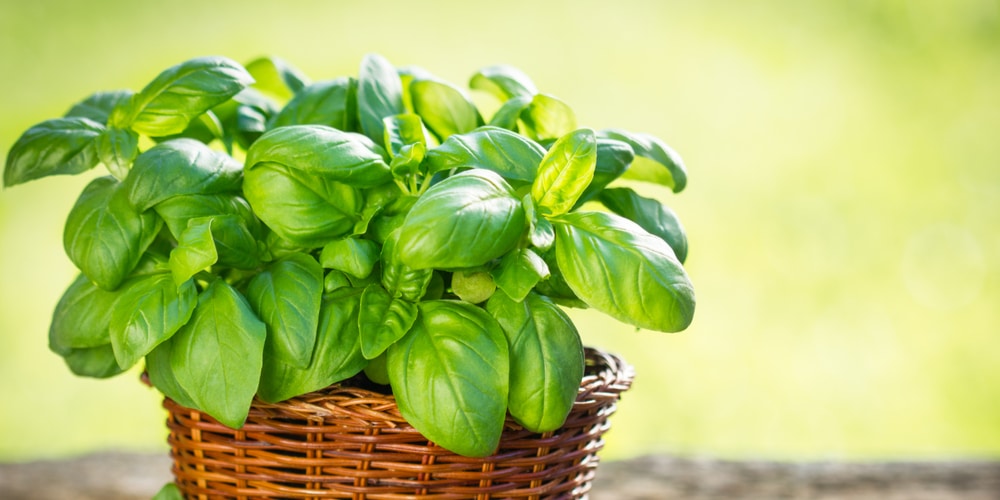If you have grown a basil plant in your house, you will know that keeping it alive, healthy, and free of pests can be challenging. That is why trimming your basil plant is a popular way to help keep the plants alive. But there is one problem with this process: it may kill the plant and make it impossible to regrow new leaves.
Is it Possible for the Basil Plant to Regrow After trimming?
Yes! Whether you have trimmed the leaves or cut off a branch, a basil plant will grow back from its stem if it has been freshly cut and the leaves are healthy, with no pests. If you grow your basil in water, place the stem in water to stimulate new growth.
If you are planting your basil in soil, trim just enough of an excess leaf to still a small “nub” on top of the exposed stem. The nub will create a new root and several new leaves to be used for cooking.
When plants begin to regrow new leaves after trimming or winter, they require extra care to stay healthy and protected from pests.
How To Enhance Regrowth Of Your Basil Plant
Lighting
A new basil plant requires at least eight hours of sunlight a day; more would be even better (up to 12 hours). Although it needs less water than many other plants, exposure to extreme summer heat and low humidity can damage its leaves — which is why you should ensure proper ventilation during the hot months.
Watering
A plant needs consistent watering, which means that it should get a constant water supply if you do not want to have leaves wither in the summer months. You should water the basil plant twice a week, allowing the foliage to rest somewhat between waterings. You can water the basil plants with a standard home irrigation system and hose.
Like most other plants and shrubs, basil requires hardly any fertilizer — just enough to start with (0-1-0) and remove any faded “brown” leaves and keep them looking good throughout the season.
Fertilization
If you have trouble with pests, various techniques can be used to rid the plant of insects, including:
- Mix some soap and castile soap for a homemade insecticide. This mixture can help you eliminate spider mites, whiteflies, and aphids’ problems.
- Add two tablespoons of garlic oil per gallon of water and spray on the leaves to kill off aphids or Japanese beetles that might be bothering your herbs.
- To rid your plants of whiteflies, make a soap spray by combining four tablespoons of dish soap and 4 gallons of water before applying to the leaves.
- Add one tablespoon of insecticidal oil to 2 cups of water and use it on your basil plant if you have problems with slugs or snails in your garden.
- If hungry lizards or other pests are after your basil foliage, a dip in insecticidal soap and water can kill them.
How To Propagate Basil Plants
You can sow the basil seeds directly in your garden after the danger of frost has passed. If you are not planting outside until later in the season, start seeds indoors about eight weeks before your last frost date. Sow seeds in individual pots or peat pots, cover them with an inch of soil and keep moist until germinated.
- Soak seeds overnight and then sow 1/8-an inch deep in warm soil and cover lightly with soil. Keep evenly moist until germination (usually less than a week). Germination temperature is 75-85 degrees F.
- Sow seeds in the garden 6 to 8 weeks before your first fall frost.
- Sow seeds indoors eight weeks before the last frost. Keep soil warm, about 70 degrees F.; provide bright light—at least 5 hours per day. Transplant outside after first true leaves develop. Space plants 12 inches apart.
If you cannot find a good source for directly grown transplants, try the following:
When put in moist sand or perlite, rhizome cuttings will root in 3-5 weeks.
Planting seedlings
Plant seedlings 20 to 40 percent below the soil surface. Keep them watered and misted. They should grow about an inch annually. Most seeds germinate in 4 to 6 weeks. Transplant outside after leaves have developed and plants have become one year old or larger.
Use a garden fork to loosen the soil around each plant and set the plant at least 12 inches apart to allow top growth without competition from weeds and grasses.
Basil plants may be grown in a container. Start several plants, then pinch off flower buds to encourage foliage growth to increase yield. Pinch off any new flower buds throughout the summer as they appear. Plants may be pinched and harvested at any time, but the flavor of new leaves tends to be stronger than that of older leaves.
Watering
Basil should be watered regularly during periods of growth and less often when leaves are not forming or when temperatures are below 50 degrees F. In this case, water stress and hot temperatures (above 90 degrees F.) can cause foliage to turn black. However, this does not affect flavor or overall yield when promptly completing the harvest. Basil plants usually survive a light frost for several hours.
Basil is a warm-weather crop, so you will want to bring it in before the first frost.
Pruning
Rake leaves on the ground around the plant base to help insulate them during freezing temperatures. Prune back basil during March or April to encourage new growth for harvesting year-round. If you are planting from seed, start in February under fluorescent lights indoors 6-8 weeks before the last frost of spring.
You can transplant your basil outside after all danger of frost has passed or ten weeks before your first fall frost date. You should space the plants at least 12 inches apart to allow top growth without competition from weeds and grasses.
Do Basil Plants Regrow?: Conclusion
Basil plants are known as the easiest plant you can grow indoors. They are versatile, do not require much care or light, and can be grown in planters hung from your home. Therefore, your basil plant can regrow after trimming.
Related Article: How Often Should I Water My Basil Plant?


